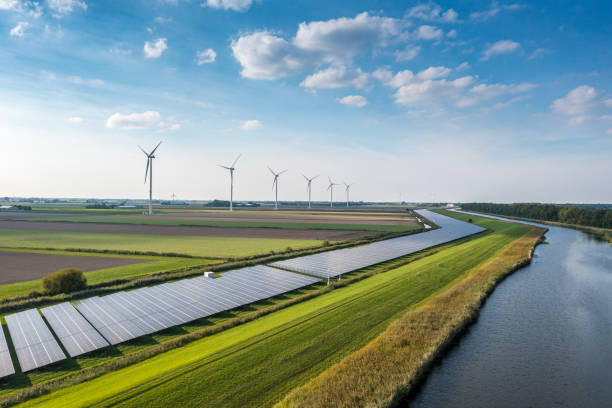The shift towards renewable energy sources has profound implications for the consumer electronics industry. This article aims to explore how renewable energy technologies are transforming the production, consumption, and overall impact of electronic devices.
The Rise of Renewable Energy

Renewable energy sources such as solar, wind, and hydroelectric power have seen significant growth in recent years. The declining cost of technology and increased environmental awareness have driven this surge. Renewable energy now powers everything from homes to large-scale industries, including the manufacturing sector of consumer electronics. This trend not only reduces dependency on fossil fuels but also serves as a catalyst for innovation within the consumer electronics market.
Impact on Manufacturing Processes
The integration of renewable energy sources into manufacturing processes has led to more sustainable production methods. Factories that utilize solar panels or wind turbines can significantly lower their carbon footprint. Furthermore, renewable energy often results in cost savings in the long run, which can be redirected towards research and development of more efficient and eco-friendly products. In essence, renewable energy fosters a greener supply chain, which benefits not only the environment but also consumers who are increasingly demanding sustainable products.
Advantages for Consumers
Consumers directly benefit from the shift toward renewable energy in several ways. Firstly, lower production costs due to cheaper renewable energy can lead to lower retail prices for electronic goods. Secondly, products powered by renewable energy tend to have a longer lifespan and higher energy efficiency. Lastly, consumers can feel good about their purchases, knowing that they are contributing to a reduction in greenhouse gas emissions.
Renewable Energy-Powered Devices
There is a growing market for consumer electronics that are either powered by renewable energy or designed to integrate with renewable energy systems. These include solar-powered chargers, wind-up radios, and energy-efficient appliances. Such devices not only reduce the demand for traditional energy sources but also serve as a testament to the innovation driven by renewable energy. Here is a list of some popular renewable energy-powered devices:
- Solar-powered smartphone chargers
- Wind-up radios and flashlights
- Energy-efficient home appliances
- Solar-powered wearable technology
- Renewable energy-integrated smart home systems
The Future of Consumer Electronics and Renewable Energy
The consumer electronics industry is poised for even greater changes as renewable energy technologies continue to evolve. Innovations such as transparent solar panels, which could be integrated into smartphone screens or windows, and more efficient energy storage solutions, like advanced batteries, are on the horizon. These advancements will not only further reduce the environmental impact but also offer new functionalities and enhanced user experiences.
Conclusion
In conclusion, the impact of renewable energy on consumer electronics is multifaceted and transformative. From more sustainable manufacturing processes to innovative renewable energy-powered devices, the benefits are clear. The symbiotic relationship between these two sectors is leading to a greener, more sustainable future. As technology advances, this relationship will only deepen, offering consumers better products that are not just technologically advanced but also environmentally responsible.
FAQs
1. How does renewable energy affect the cost of consumer electronics?
Renewable energy can lower production costs over time, which can translate to lower retail prices for consumers. It also encourages the development of more energy-efficient technologies.
2. What are some examples of renewable energy-powered consumer electronics?
Examples include solar-powered smartphone chargers, wind-up radios, energy-efficient home appliances, and solar-powered wearable technology.
3. Can renewable energy-powered devices fully replace traditional energy sources?
While renewable energy-powered devices can significantly reduce reliance on traditional energy sources, a complete transition will require further advancements in technology and infrastructure.
4. Are renewable energy-powered electronics more expensive?
Initially, they may be more expensive due to the technology involved. However, they can save money in the long run due to lower energy consumption and longer lifespans.
5. How do renewable energies contribute to a greener supply chain?
By using sustainable energy sources in manufacturing, the carbon footprint of production processes is significantly reduced, contributing to an overall greener supply chain.



